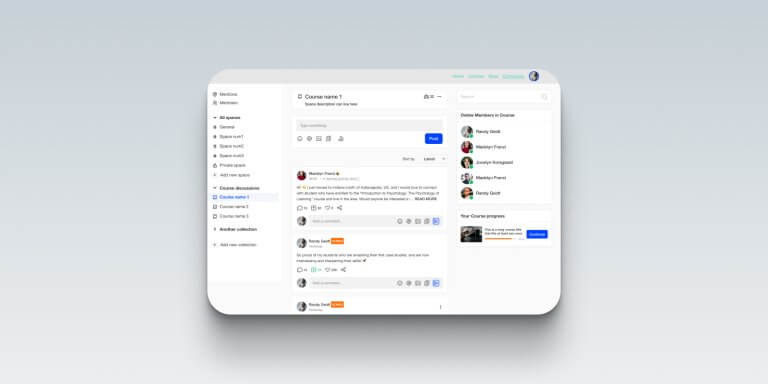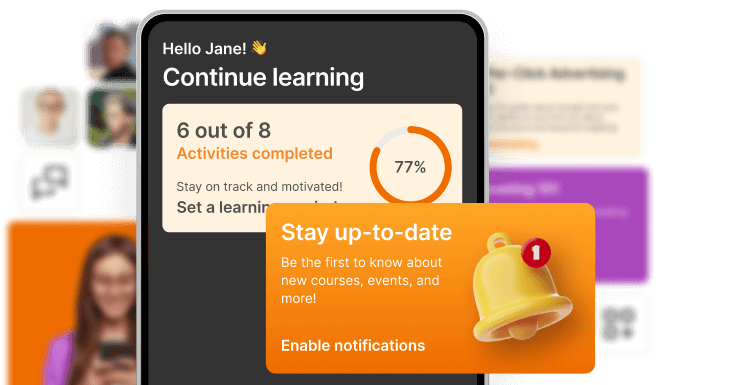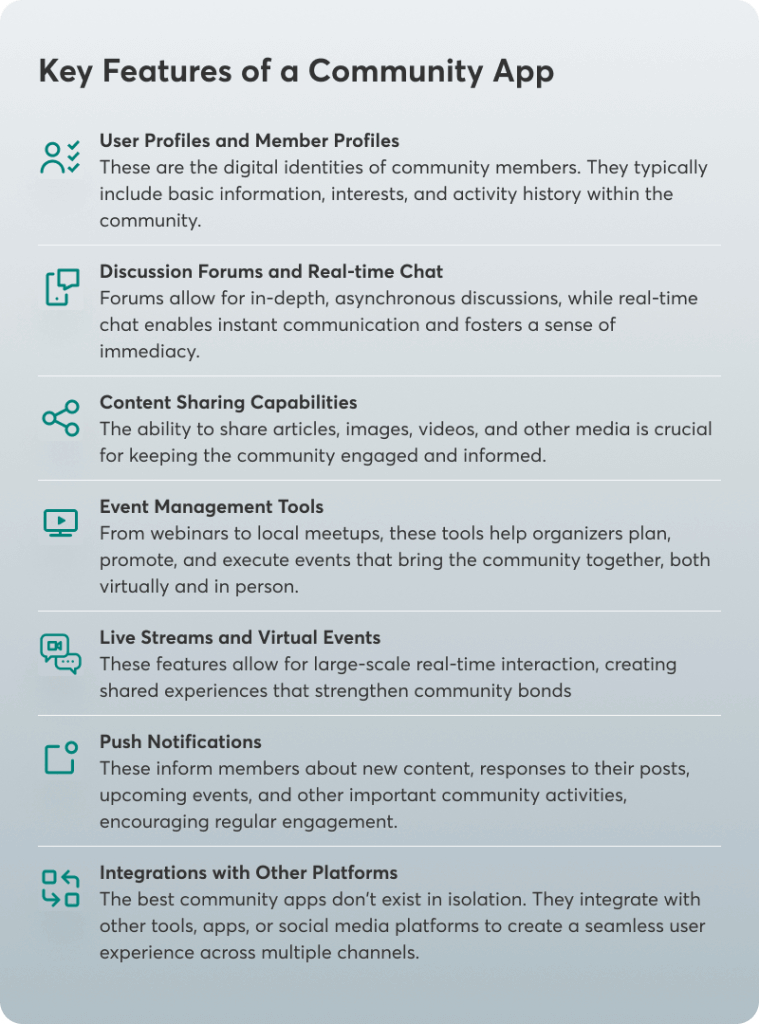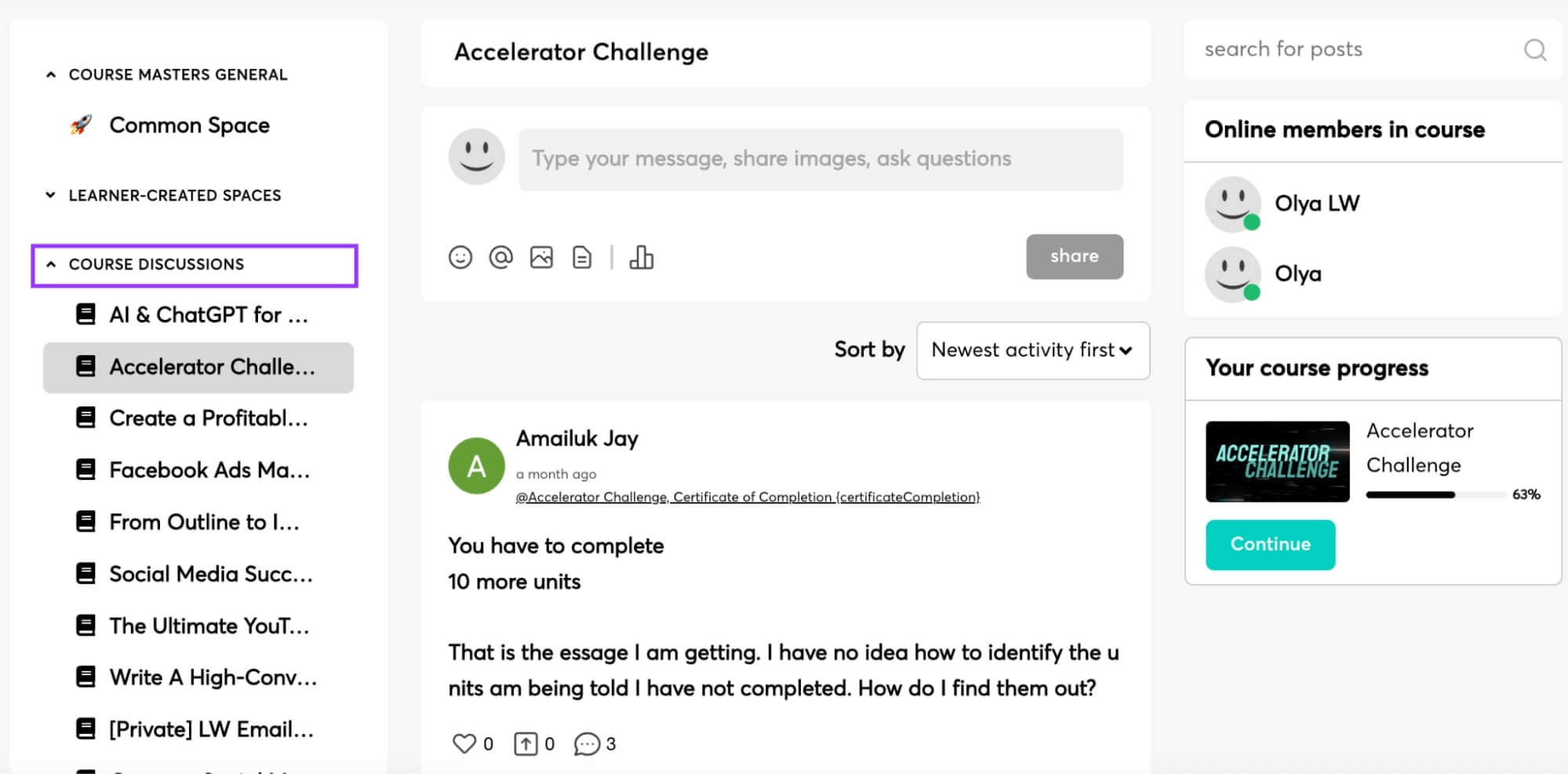Table of Contents
Have you ever felt the need to connect with like-minded individuals who share your passions, goals, or challenges? Community apps have emerged as powerful tools to bring people together, foster meaningful connections, and create vibrant online spaces in our increasingly digital world. These apps are shaping the way we interact, learn, and grow together.
This comprehensive guide explains what a community app is and explores its features, benefits, and the various types available.
Whether you’re an entrepreneur looking to build a loyal customer base, an educator seeking to create an engaging community learning environment, or simply someone who wants to connect with others who share your interests, this article will provide valuable insights into the power of community apps.
Community Apps Explained
A community app is a mobile or web application designed to connect and engage members of a specific community or group. It typically provides features facilitating communication, information sharing, event coordination, and collaboration among users with common interests, goals, or geographical locations.
Community apps aim to strengthen relationships, facilitate information exchange, and streamline group activities by providing a centralized space for communication and collaboration. They enable users to:
Ultimately, community apps seek to enhance the sense of belonging and collective action within a group, whether it’s a neighborhood, a hobby club, an educational, or a professional network.
These apps strive to create more cohesive, active, and supportive communities in our increasingly digital-driven world by leveraging technology to overcome barriers of distance and time.
Key Features of Community Apps
At the heart of every successful community app lies core and unique features designed to facilitate interaction, engagement, and connection.
Let’s break down these essential components:
Benefits of Community Apps
Now that we’ve covered the key features, let’s discuss why community apps are so powerful. As someone who’s witnessed the transformative impact of these platforms, I can attest to their numerous benefits:
Enhanced Community Engagement
Community apps provide a dedicated space for members to interact, share ideas, and collaborate. This focused environment leads to higher engagement levels than generic social media platforms. Members are more likely to participate actively in a space specifically designed for their interests or goals.
Improved User Experience
Unlike scattered communication across multiple platforms, community apps offer a centralized hub for all community activities. This streamlined approach makes it easier for members to stay connected, find relevant information, and participate in discussions or events.
Building a Sense of Belonging
One of the most powerful aspects of community apps is their ability to create a sense of belonging. In a world where many people feel isolated or disconnected, these apps provide a digital home where individuals can find their tribe. This sense of belonging can profoundly affect mental health, personal growth, academic success, and overall life satisfaction.
Connecting Like-minded Individuals
Community apps unite people with shared interests, goals, or challenges. Whether it’s a group of entrepreneurs, fitness enthusiasts, book lovers, or students, these apps facilitate connections that might never have happened otherwise. These connections often lead to collaborations, friendships, and mutual support that extend beyond the digital realm.
Facilitating Shared Interests
By providing a focused space for specific topics or interests, community apps allow for deep dives into subjects that might get lost in the noise of general social media. This depth of engagement can lead to accelerated learning, innovation, and the development of expertise within the community.
Different Types of Community Apps
The world of community apps is diverse, catering to a wide range of needs and interests. Let’s explore some of the main types:
Social Networking Platforms: These are the most general type of community app designed to connect people based on existing relationships or shared interests. While they can be broad in scope, many now offer features for creating smaller, more focused communities within the larger platform.
Examples: Facebook Groups
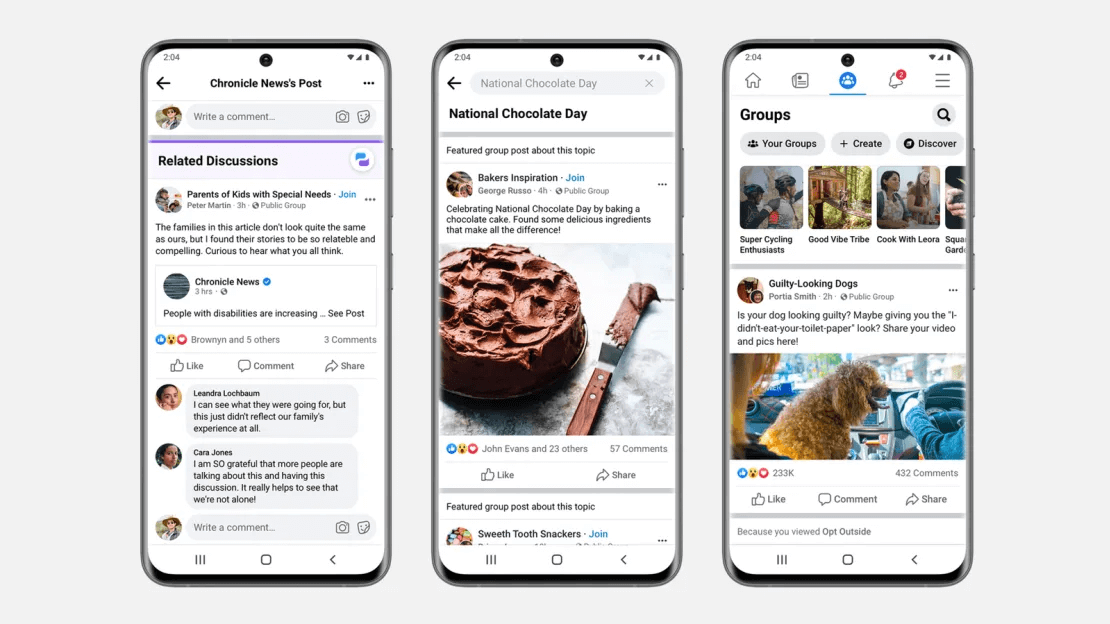
Interest-based Communities: These apps cater to specific hobbies, interests, or lifestyles. Whether it’s a community for vintage car enthusiasts, vegan cooks, or amateur astronomers, these apps provide a dedicated space for people to dive deep into their passions.
Examples: Strava, DeviantArt, Goodreads
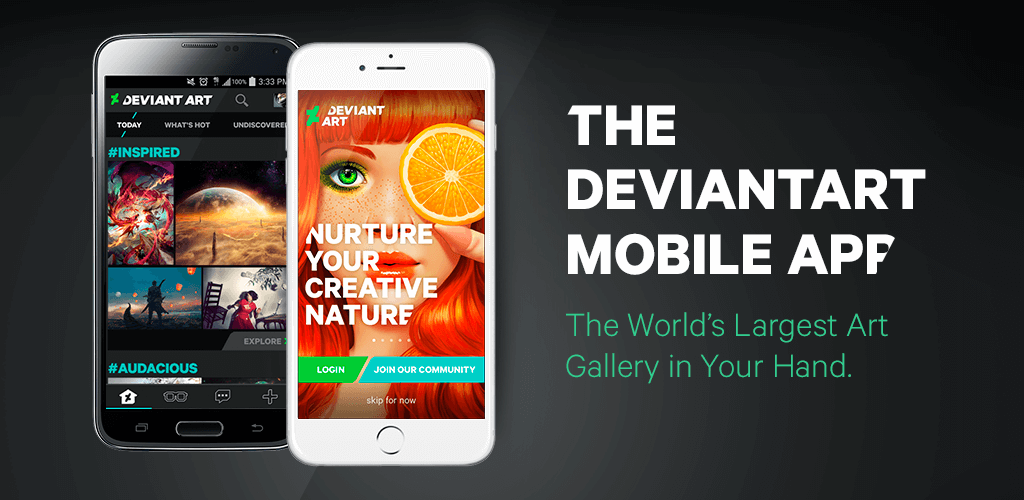
Professional Networking Apps: Focused on career development and business connections, these apps help professionals network, find job opportunities, and share industry insights. They often include features like job boards, skill endorsements, and professional development resources.
Examples: LinkedIn, Fishbowl, Xing
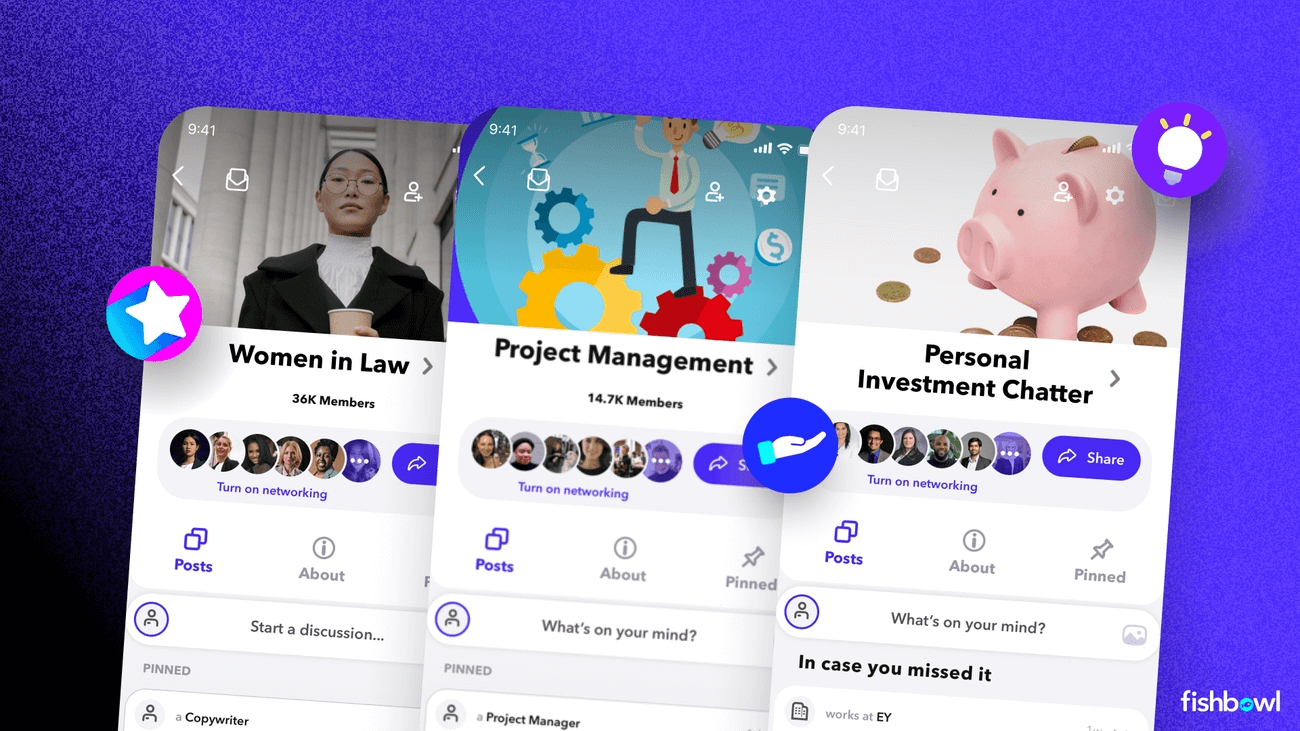
Learning and Education Communities: These apps create spaces for learners to connect with instructors and peers, access course materials, and engage in collaborative learning experiences. They’re transforming education by extending the classroom beyond physical boundaries.
Examples: Course Masters, Brainly, Khan Academy
Nonprofit and Cause-based Apps: These platforms bring together individuals passionate about specific causes or social issues. They facilitate discussion, organize activism, and coordinate volunteer efforts, amplifying the impact of nonprofit organizations and grassroots movements.
Examples: GoFundMe, Change.org, ShareTheMeal

Each type of community app has unique characteristics and benefits, but they all share the goal of bringing people together around shared interests or objectives.
💁🏻P.S.: We review each community type example in more detail and provide the best tips for building an online community in this article.
Popular Community App Platforms to Check Out
While numerous community app platforms are out there, a few have risen to prominence due to their features, ease of use, and large user bases.
These are some of the most popular options:
Facebook Groups
Despite privacy concerns surrounding its parent company, Facebook Groups remains one of the most widely used platforms for building communities. Its main advantage is the large existing user base and familiar interface. However, it can be challenging to stand out among the noise of the broader Facebook ecosystem.
Discord
Originally popular among gamers, Discord has evolved into a versatile platform for various types of communities. Its server-based structure, voice chat capabilities, and extensive bot integrations make it highly customizable. It’s particularly well-suited for communities that value real-time interaction.
Slack
While primarily known as a workplace communication tool, Slack has found a niche in professional and interest-based communities. Its channel-based organization and robust integration capabilities make it suitable for structured discussions and project collaboration.
Circle
A relative newcomer, Circle has gained popularity for its clean, intuitive interface and powerful community-building features. It’s particularly well-suited for creators, course instructors, and membership-based communities. Circle offers a good balance between simplicity and customization.
Mighty Networks
This platform stands out for its focus on course creation and monetization features alongside community-building tools. Mighty Networks is a great choice for educators, coaches, and anyone looking to build a community around their expertise or content.
💁🏻Compare Mighty Networks vs LearnWorlds
Each platform has its strengths and weaknesses, and the best choice depends on your specific community needs, technical requirements, and long-term goals. As someone who’s evaluated various platforms, I always recommend thoroughly weighing your options before deciding.
💁🏻Explore the Best Community Platforms for 2024
My personal favorite is, of course, LearnWorlds. Our all-in-one online course platform is not just a course delivery system or a platform you use to create and sell online courses; it’s a premium elearning solution that offers powerful built-in social features to help you build a thriving learning community, connect and engage your learners, foster meaningful discussions, and boost their motivation.
With its robust analytics, user progress, course insights, and ability to help you build your own 100% branded mobile app, you can easily expand your reach and scale your online business. Try it out for free today!
Building Your Own Community App
If you’re considering creating a community app tailored to your specific needs, you’re in for an exciting journey. Before doing so, though, you must be aware of a few important things to ensure your community meets all the technical requirements you expect it to meet.
Choosing between custom development and white-label solutions is often the first big decision you must make. Custom development gives you complete control over features and design but requires significant time and financial investment.
On the other hand, white-label solutions offer a faster and often more cost-effective way to launch your community app, but with often less customization. Your choice will depend on your budget, technical expertise, and specific requirements.
On top of the capabilities we discussed earlier, also look for the following community features:
Remember, the goal is to create a space that encourages engagement and fosters meaningful connections.
User-friendly design and ease of use: This cannot be overstated enough. Your community app should be intuitive and easy to navigate, even for less tech-savvy users.
You might want to consider factors like:
Mobile optimization (iOS and Android): In our mobile-first world, it is crucial to ensure your app works seamlessly on smartphones. This might mean developing a native mobile app for iOS and Android or creating a highly responsive web app that functions well on mobile browsers.
Gamification and retention strategies: To keep users engaged over the long term, consider incorporating elements like:
These strategies can significantly boost user engagement and retention, turning casual users into committed community members.
Community Management Best Practices
Building a community app is just the beginning, of course. The real work lies in managing and nurturing your community. So, here are some best practices I’ve witnessed over the years:
Setting up permissions and moderation: Clear guidelines and efficient moderation are essential for maintaining a healthy community.
Consider implementing:
Encouraging user engagement: Active participation is the lifeblood of any community.
Some strategies to boost engagement include:
Content creation and curation: As a community manager, you must balance creating original content with curating valuable contributions from members.
Here are some suggestions:
Organizing virtual events and online courses: Events and courses can provide focal points for community interaction and learning.
Think about offering:
Utilizing analytics for community growth: Data is your friend for understanding and improving your community.
Pay attention to metrics like:
These insights can help you refine your community management strategies, providing more value to your members.
Monetization Strategies You Can Try Out
While building a thriving community can be financially rewarding in itself, many community creators also seek ways to monetize their platforms.
So, here are some popular strategies you can try out:
Subscriptions and membership tiers: This model involves charging users a recurring fee for access to the community. You might offer different tiers with varying levels of access or benefits.
For example:
In-app purchases: This can include one-time purchases for special features, digital goods, or exclusive content within your community applications that can be shown in the App Store.
For instance:
Sponsored content and partnerships: As your community grows, you may attract brands interested in reaching your audience.
Invest your efforts in the following:
Offering premium features or content: This hybrid approach involves keeping basic community access free while charging for advanced features or exclusive ‘gated’ content.
Examples include:
The key to successful monetization is providing clear value to your community members. Any paid offerings should enhance the community experience, not detract from it.
💁🏻Check out these 17 Innovative Business Models for Monetizing Your Online Academy
Challenges and Considerations You Need to Be Aware of
While community apps offer tremendous opportunities, they also come with their share of challenges. Here are some key considerations to keep in mind:
Privacy and data protection: In an era of increasing concern about digital privacy, it’s crucial to be transparent about how you collect, use, and protect user data.
Consider including the following:
Scalability and performance: As your community grows, you’ll need to ensure your app can handle increased traffic and data without compromising performance.
This could involve:
Competing with established social media platforms: With giants like Facebook, Instagram, X, and TikTok dominating the social media landscape, carving out a space for your community app can be challenging.
To stand out, you can try the following:
Keeping community members engaged long-term: Maintaining engagement over time is one of the biggest challenges for any community.
Some strategies that can address this include:
By anticipating these challenges and planning for them, you can create a more resilient and successful community app.
💁🏻Tap into the Ultimate Mobile App Builder Experience with LearnWorlds
Future Trends in Community Apps
As technology evolves and user expectations shift, the landscape of community apps changes. The global market size for online community engagement platforms and software is expected to reach USD 595.5 million by 2031, surpassing USD 281.7 million in 2023.
Until it hits that new milestone, several exciting trends, including AI, augmented and virtual reality, blockchain, and micro-communities, are worth watching.
Let’s review these in greater detail:
AI-powered personalization: Artificial intelligence is set to play a bigger role in tailoring community experiences to individual users.
This could involve:
Augmented and virtual reality integration: As AR and VR technologies become more accessible, they could transform how we interact in online communities.
In the future, you can expect to see:
Blockchain and decentralized communities: Blockchain technology could revolutionize how communities are governed and how value is exchanged.
This might include:
Increased focus on niche and micro-communities: While large, general-purpose social networks aren’t going away, we’re likely to see a proliferation of smaller, more focused communities.
These niche spaces can offer:
Recognizing and closely tracking these trends is essential as it enables you to cultivate a resilient community capable of swiftly adapting to changing industry demands.
Ready to Build Your Own Community or Community App?
As we’ve explored throughout this guide, community apps are powerful tools for bringing people together, fostering connections, and creating value in our digital world. Whether you want to join an existing community or build your own, the opportunities are vast and exciting.
I encourage you to take what you’ve learned here and apply it to your community-building journey. As an educator, you can use a community app to create a more engaging learning environment, or as an entrepreneur, you can use it to build a loyal customer base. If you are passionate about connecting with like-minded individuals, a community app solution exists for you, too.
Remember, at the heart of every successful community is genuine human connection.
Technology is just the tool – it’s the people and the relationships they form that truly make a community thrive. So go forth, explore, connect, and create. We are waiting for you to make your mark!
Start building your own thriving learning community with LearnWorlds today.
Further reading
- How to Create and Sell Profitable Online Courses: Step-by-Step Guide
- Knowledge Economy: How to Sell Knowledge Online
- How to Start a Profitable Online Course Business From Scratch
- 183 Profitable Online Course Ideas With Examples
- Sell Digital Downloads: The Complete Guide for 2024
- SCORM 101: The Definitive Guide to Choose a SCORM Compliant LMS
- How Much Money Can You Make Selling Online Courses?
Kyriaki is a Content Creator for the LearnWorlds team writing about marketing and e-learning, helping course creators on their journey to create, market, and sell their online courses. Equipped with a degree in Career Guidance, she has a strong background in education management and career success. In her free time, she gets crafty and musical.

